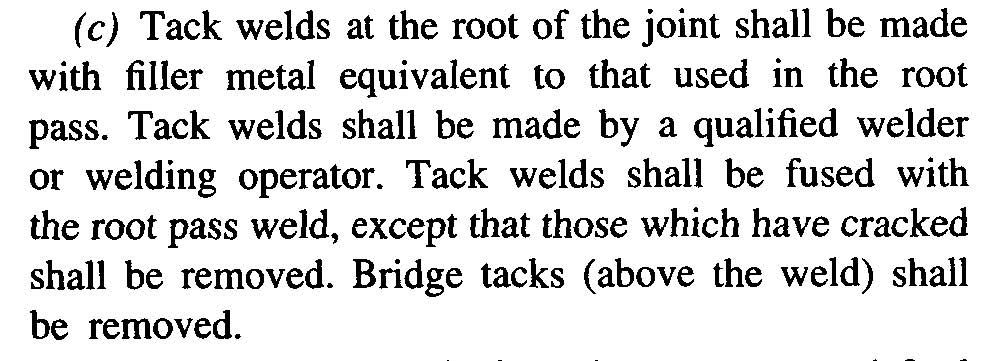
 By 803056
By 803056  Date
Date 06-16-2009 17:21
Edited 06-16-2009 17:28
The code lists the minimum requirements that must be met. The contractor/manufacturer/installer/erector has to ensure the work they produce meets or is better than the minimum requirements prescribed by the code. To that end they can devise a system that ensure compliance with the code which may apply in this case.
If the applicable code is unclear, I would propose a simple tacking test where a groove is prepared and the tacker welds it with the required weld size and length. Make sure they follow a WPS and they understand what the purpose of the WPS is and they know how to implement its requirements, i.e., proper filler metal, electrode storage, preheat, proper root opening is present after tacking, etc. If there is a requirement that the ends of the tack welds be "feathered" (tapered) by the applicable code (B31.3 high pressure for example) make that a part of the "test".
The tack weld test should be in test position(s) expected in production. I would propose a plate positioned in each of the four test positions, i.e., 1G, 2G, 3G, and 4G. Each plate test could consist of three tack welds, one at each end and one in the middle while maintaining the require root opening once the tacks are completed.
Visually examine the three tack welds, section them, and perform a macroscopic examinations to verify they are free of unacceptable conditions such as undercut, incomplete fusion, incomplete joint penetration, proper root opening, etc. As with any test, there should be a test record of who, what, when, and the results of the test.
Since this test is not included or described in the applicable code, you should definitely document it as a test procedure that complete defines and describes the test, requirements, and results required.
Best regards - Al


